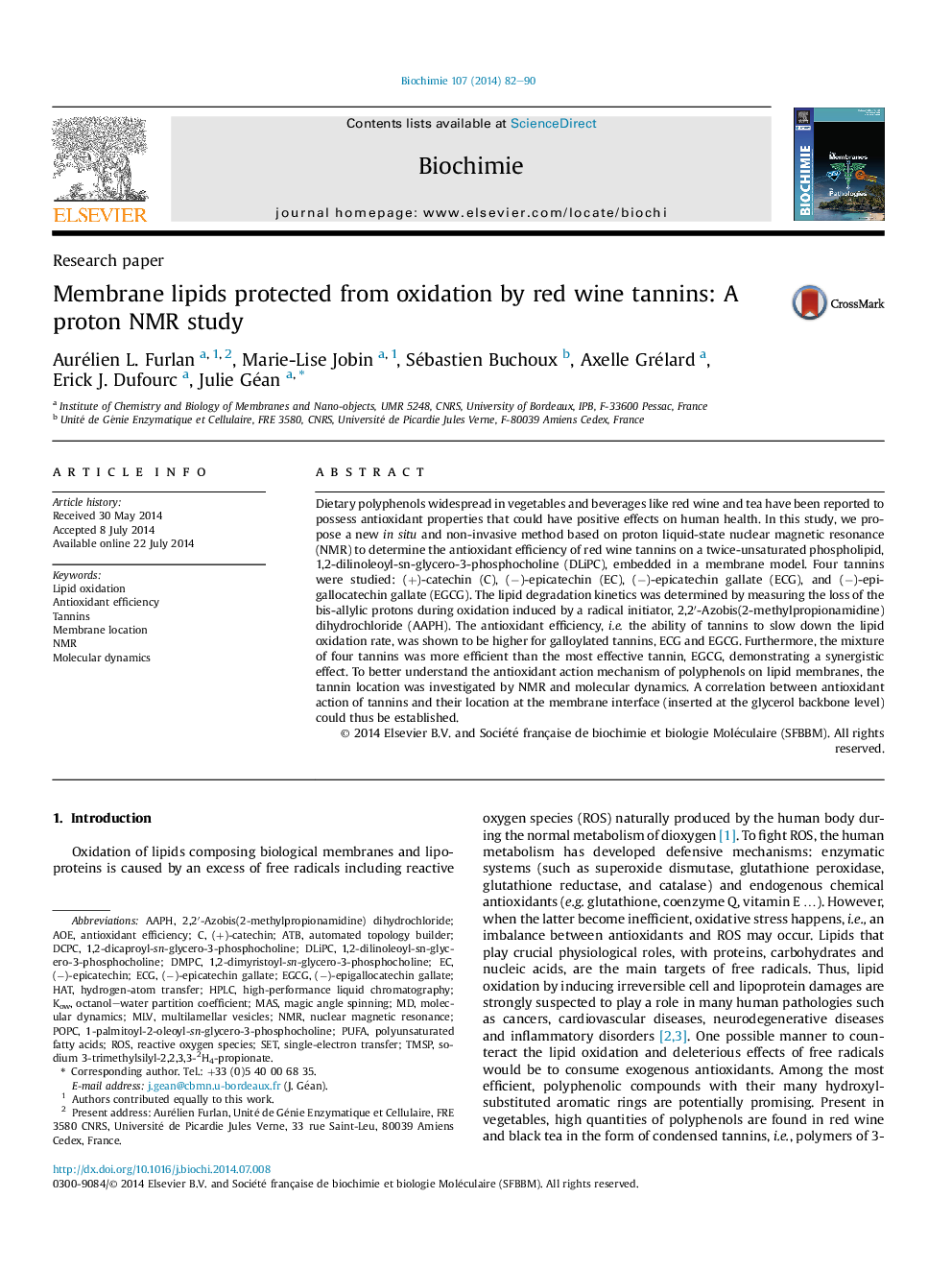| Article ID | Journal | Published Year | Pages | File Type |
|---|---|---|---|---|
| 1952096 | Biochimie | 2014 | 9 Pages |
•In situ lipid oxidation in membrane models is monitored by NMR.•Tannins inhibit lipid oxidation in membrane models.•Tannins are located at the water–membrane interface.
Dietary polyphenols widespread in vegetables and beverages like red wine and tea have been reported to possess antioxidant properties that could have positive effects on human health. In this study, we propose a new in situ and non-invasive method based on proton liquid-state nuclear magnetic resonance (NMR) to determine the antioxidant efficiency of red wine tannins on a twice-unsaturated phospholipid, 1,2-dilinoleoyl-sn-glycero-3-phosphocholine (DLiPC), embedded in a membrane model. Four tannins were studied: (+)-catechin (C), (−)-epicatechin (EC), (−)-epicatechin gallate (ECG), and (−)-epigallocatechin gallate (EGCG). The lipid degradation kinetics was determined by measuring the loss of the bis-allylic protons during oxidation induced by a radical initiator, 2,2′-Azobis(2-methylpropionamidine) dihydrochloride (AAPH). The antioxidant efficiency, i.e. the ability of tannins to slow down the lipid oxidation rate, was shown to be higher for galloylated tannins, ECG and EGCG. Furthermore, the mixture of four tannins was more efficient than the most effective tannin, EGCG, demonstrating a synergistic effect. To better understand the antioxidant action mechanism of polyphenols on lipid membranes, the tannin location was investigated by NMR and molecular dynamics. A correlation between antioxidant action of tannins and their location at the membrane interface (inserted at the glycerol backbone level) could thus be established.
Graphical abstractFigure optionsDownload full-size imageDownload high-quality image (195 K)Download as PowerPoint slide
